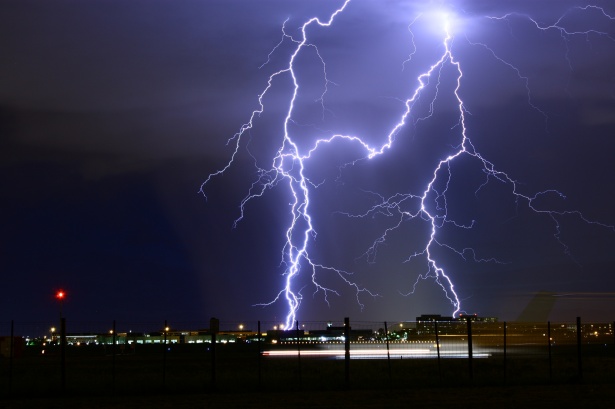
Lightning Safety & Preparedness
January 21, 2017
Lightning is one of the most underrated severe weather hazards, yet ranks as one of the top weather killers in the United States. Lightning strikes in America kill about 50 people and injure hundreds of others each year. Unlike other weather hazards that often involve sophisticated watches and warnings from NOAA’s National Weather Service, lightning can occur anywhere there is a thunderstorm.
Outdoor Safety Tips
The best defense is to avoid lightning. Here are some outdoor safety tips that can help you avoid being struck:
Do
-
Be aware: Check the weather forecast before participating in outdoor activities. If the forecast calls for thunderstorms, postpone your trip or activity, or make sure adequate safe shelter is readily available.
-
Go indoors: Remember the phrase, "When thunder roars, go indoors." Find a safe, enclosed shelter when you hear thunder. Safe shelters include homes, offices, shopping centers, and hard-top vehicles with the windows rolled up.
-
Crouch close to the ground: If you are caught in an open area, crouch down in a ball-like position (feet and knees together) with your head tucked and hands over your ears so that you are down low with minimal contact with the ground. Do NOT lie down. Lightning causes electric currents along the top of the ground that can be deadly over 100 feet away. Crouching down is the best combination of being low and touching the ground as little as possible.
-
Separate: If you are in a group during a thunderstorm, separate from each other. This will reduce the number of injuries if lightning strikes the ground.
Don't
-
Stay in open vehicles, structures, and spaces: During a thunderstorm, avoid open vehicles such as convertibles, motorcycles, and golf carts. Be sure to avoid open structures such as porches, gazebos, baseball dugouts, and sports arenas. And stay away from open spaces such as golf courses, parks, playgrounds, ponds, lakes, swimming pools, and beaches.
-
Stay near tall structures: Do NOT lie on concrete floors during a thunderstorm. Also, avoid leaning on concrete walls. Lightning can travel through any metal wires or bars in concrete walls or flooring.
Indoor Safety Tips
Even though your home is a safe shelter during a lightning storm, you may still be at risk. About one-third of lightning-strike injuries occur indoors. Here are some tips to keep safe and reduce your risk of being struck by lightning while indoors.
-
Avoid water: Do NOT bathe, shower, wash dishes, or have any other contact with water during a thunderstorm because lightning can travel through a building’s plumbing.
-
Avoid electronic equipment: Do NOT use your computers, laptops, game systems, washers, dryers, stoves, or anything connected to an electrical outlet. Lightning can travel through electrical systems, radio and television reception systems, and any metal wires or bars in concrete walls or flooring. Equip homes with whole-house surge protectors to protect appliances.
-
Avoid corded phones: Corded phones are NOT safe to use during a thunderstorm. Do NOT use them. However, it is safe to use cordless or cellular phones during a storm.
-
Avoid windows, doors, porches, and concrete: Do NOT lie on concrete floors during a thunderstorm. Also, avoid leaning on concrete walls. Lightning can travel through any metal wires or bars in concrete walls or flooring.
CDC - Lightning Safety:
https://www.cdc.gov/disasters/lightning/safetytips.html